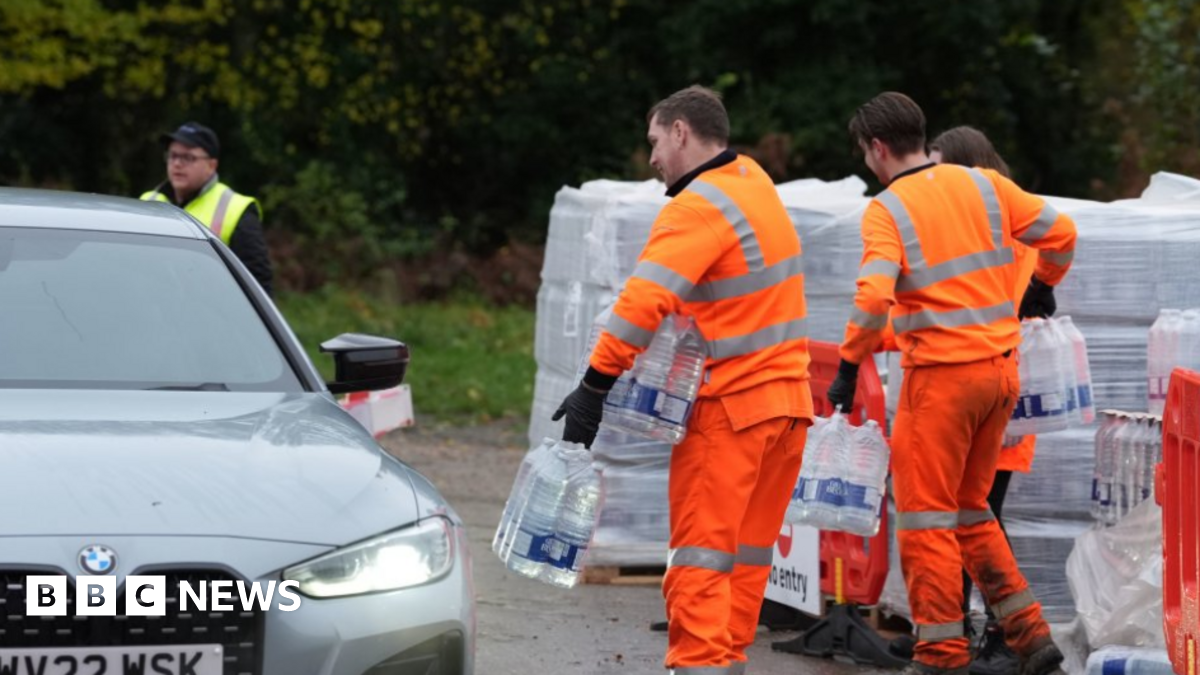PPG introduces ultrafiltration antifouling membrane for water treatment – Investing News Network
Report on PPG’s Ultrafiltration Membrane Technology and its Contribution to Sustainable Development Goals
1.0 Introduction
PPG has introduced a new ultrafiltration (UF) antifouling membrane designed for the purification and treatment of challenging industrial wastewater. This development addresses the increasing global demand for sustainable filtration solutions that support environmental protection and resource management. The technology is engineered to facilitate the safe and economical disposal or reuse of water from highly contaminated industrial sources, directly aligning with several United Nations Sustainable Development Goals (SDGs).
2.0 Technological Specifications and Operational Benefits
The new UF membrane incorporates advanced features to enhance performance, durability, and environmental safety, contributing to more sustainable industrial operations (SDG 9, SDG 12).
- Antifouling Surface: The membrane features a super-hydrophobic surface that resists fouling from oil, grease, and other difficult-to-remove contaminants.
- Extended Service Life: By minimizing fouling, the technology extends the operational lifespan of the membrane elements.
- Reduced Operational Costs: The antifouling properties lead to lower maintenance requirements and minimize system downtime, improving operational efficiency.
- PFAS-Free Composition: The entire portfolio of PPG’s membranes is produced using a proprietary composite material that does not contain intentionally-added polyfluoroalkyl substances (PFAS), supporting responsible chemical management (SDG 12).
- High Throughput: The membranes separate contaminants at higher throughputs compared to conventional systems, reducing the physical footprint required for water recovery installations.
3.0 Industrial Applications
The membrane is designed for a wide range of applications where water contamination poses a significant challenge. Its implementation helps industries manage their water cycles more responsibly.
- Offshore and onshore oil-water separation
- Dry dock and in-water marine vessel wastewater treatment (e.g., bilge water)
- Industrial process water and general wastewater treatment
- Automotive and industrial paint line water management
- Graywater treatment and reuse
4.0 Alignment with Sustainable Development Goals (SDGs)
The introduction of PPG’s UF membrane technology provides a direct contribution to the achievement of key Sustainable Development Goals by promoting cleaner water, responsible production, and industrial innovation.
4.1 SDG 6: Clean Water and Sanitation
- Target 6.3: The technology directly supports this target by improving water quality through the effective treatment of polluted industrial wastewater. It enables a substantial increase in water recycling and safe reuse globally.
- Water Scarcity: By facilitating cost-effective water reuse, the membrane helps industrial users reduce their reliance on external freshwater supplies, contributing to efforts to address global water scarcity.
4.2 SDG 9: Industry, Innovation, and Infrastructure
- Target 9.4: This innovation contributes to upgrading infrastructure and retrofitting industries to be more sustainable. The membrane’s efficiency promotes the adoption of clean and environmentally sound technologies and industrial processes, enhancing resource-use efficiency.
4.3 SDG 12: Responsible Consumption and Production
- Target 12.2: The technology promotes the sustainable management and efficient use of natural resources by enabling the circular use of water within industrial processes.
- Target 12.4: The membrane’s PFAS-free composition represents an advancement in the environmentally sound management of chemicals. Its primary function—treating industrial wastewater—reduces the release of pollutants into water and soil.
4.4 SDG 14: Life Below Water
- Target 14.1: By effectively treating wastewater from marine and offshore applications, such as oil-water separation and bilge water treatment, the technology helps prevent and significantly reduce marine pollution from land-based and sea-based industrial activities.
Analysis of Sustainable Development Goals (SDGs) in the Article
1. Which SDGs are addressed or connected to the issues highlighted in the article?
-
SDG 6: Clean Water and Sanitation
- The article’s primary focus is on a new technology for “industrial water purification and treatment.” The ultrafiltration (UF) membrane is designed for “difficult-to-treat industrial wastewater applications,” directly contributing to improving water quality and promoting sanitation in industrial contexts. The text explicitly mentions that the technology helps address “global water scarcity challenges” by enabling water reuse.
-
SDG 9: Industry, Innovation, and Infrastructure
- The article introduces an innovative technology—a new “ultrafiltration (UF) antifouling membrane”—developed by PPG. This represents an advancement in industrial processes. The technology is designed to make industries more sustainable by improving how they manage wastewater, which aligns with upgrading infrastructure and retrofitting industries with “clean and environmentally sound technologies.” The investment in the Barberton, Ohio, facility to produce the membrane also points to developing resilient infrastructure.
-
SDG 12: Responsible Consumption and Production
- The technology promotes sustainable production patterns by enabling “cost-effective water reuse,” which helps “reduce reliance on external water supplies.” This is a clear example of the efficient use of natural resources. Furthermore, the membrane itself is produced “without intentionally-added polyfluoroalkyl substances (PFAS),” addressing the environmentally sound management of chemicals and reducing pollution from the product’s lifecycle.
-
SDG 14: Life Below Water
- The article specifies that applications for the UF membrane include “offshore and onshore oil-water separation” and “in-water marine ship treatment.” These applications directly prevent the pollution of marine environments by treating contaminated water (like bilge water) before it is discharged, thus reducing marine pollution from land-based and sea-based activities.
2. What specific targets under those SDGs can be identified based on the article’s content?
-
Target 6.3: Improve water quality, wastewater treatment, and safe reuse
- The article directly addresses this target by introducing a membrane that treats “hard-to-treat water containing a wide range of oily waste and other contaminants.” The technology’s purpose is to enable “safe and economical disposal or reuse,” which contributes to increasing the proportion of treated wastewater and promoting safe reuse globally.
-
Target 6.4: Increase water-use efficiency and address water scarcity
- The article highlights that the membrane “supports cost-effective water reuse, helping customers reduce reliance on external water supplies.” This directly contributes to increasing water-use efficiency in the industrial sector and is presented as a solution to “address global water scarcity challenges.”
-
Target 9.4: Upgrade infrastructure and industries for sustainability
- The new UF membrane is described as a “sustainable UF filtration solution” that allows industries to “operate more sustainably.” By adopting this technology, industries can retrofit their processes to increase resource-use efficiency (water reuse) and adopt a cleaner, more environmentally sound technology for wastewater management.
-
Target 12.4: Responsible management of chemicals and waste
- The technology is designed to manage industrial waste by treating wastewater containing “oil, grease and other tough-to-remove contaminants.” Additionally, the product itself is manufactured more responsibly, as the article states that PPG’s portfolio “does not contain intentionally-added polyfluoroalkyl substances (PFAS),” contributing to the environmentally sound management of chemicals throughout their life cycle.
-
Target 14.1: Reduce marine pollution
- The article lists “offshore and onshore oil-water separation” and “dry dock and in-water marine ship treatment” as key applications. By effectively treating contaminated water from these sources, the technology directly helps to prevent and significantly reduce marine pollution from oil and other industrial contaminants.
3. Are there any indicators mentioned or implied in the article that can be used to measure progress towards the identified targets?
-
Indicator for Target 6.3: Proportion of industrial wastewater safely treated and reused
- The article implies this indicator by focusing on the membrane’s ability to treat “difficult-to-treat industrial wastewater” and enable its “safe and economical disposal or reuse.” Progress could be measured by the volume of industrial wastewater that is successfully treated and reused by industries adopting this technology.
-
Indicator for Target 6.4: Reduction in industrial water withdrawal
- The article’s statement that the technology helps “reduce reliance on external water supplies” implies a measurable reduction in the amount of fresh water industries need to withdraw. This directly measures an increase in water-use efficiency.
-
Indicator for Target 12.4: Reduction in hazardous chemicals used and released
- The article provides two potential indicators. First, the amount of “oily waste and other contaminants” removed from wastewater before release. Second, the elimination of PFAS from the manufacturing of the filtration membranes themselves, which can be measured by the volume of PFAS-free products produced and used.
-
Indicator for Target 14.1: Volume of pollutants prevented from entering marine ecosystems
- The application in “bilge water treatment” and “offshore oil-water separation” directly implies an indicator: the quantity of oil, grease, and other contaminants captured and prevented from being discharged into the sea.
Summary Table of SDGs, Targets, and Indicators
| SDGs | Targets | Indicators |
|---|---|---|
| SDG 6: Clean Water and Sanitation | 6.3: Improve water quality by reducing pollution, halving the proportion of untreated wastewater, and increasing recycling and safe reuse.
6.4: Substantially increase water-use efficiency and address water scarcity. |
Proportion of industrial wastewater safely treated and reused.
Reduction in industrial water withdrawal due to increased reuse. |
| SDG 9: Industry, Innovation, and Infrastructure | 9.4: Upgrade infrastructure and retrofit industries to make them sustainable, with increased resource-use efficiency and adoption of clean technologies. | Rate of adoption of sustainable UF filtration technology by industrial sectors. |
| SDG 12: Responsible Consumption and Production | 12.4: Achieve the environmentally sound management of chemicals and all wastes throughout their life cycle and reduce their release to water. | Amount of hazardous waste (e.g., oily contaminants) treated.
Elimination of intentionally-added PFAS in the manufacturing of filtration membranes. |
| SDG 14: Life Below Water | 14.1: Prevent and significantly reduce marine pollution of all kinds, in particular from land-based activities. | Volume of oil and other contaminants removed from marine-related sources (e.g., bilge water, offshore operations) before discharge. |
Source: investingnews.com
What is Your Reaction?
 Like
0
Like
0
 Dislike
0
Dislike
0
 Love
0
Love
0
 Funny
0
Funny
0
 Angry
0
Angry
0
 Sad
0
Sad
0
 Wow
0
Wow
0




















































.jpg.webp?itok=0ZsAnae9#)

























